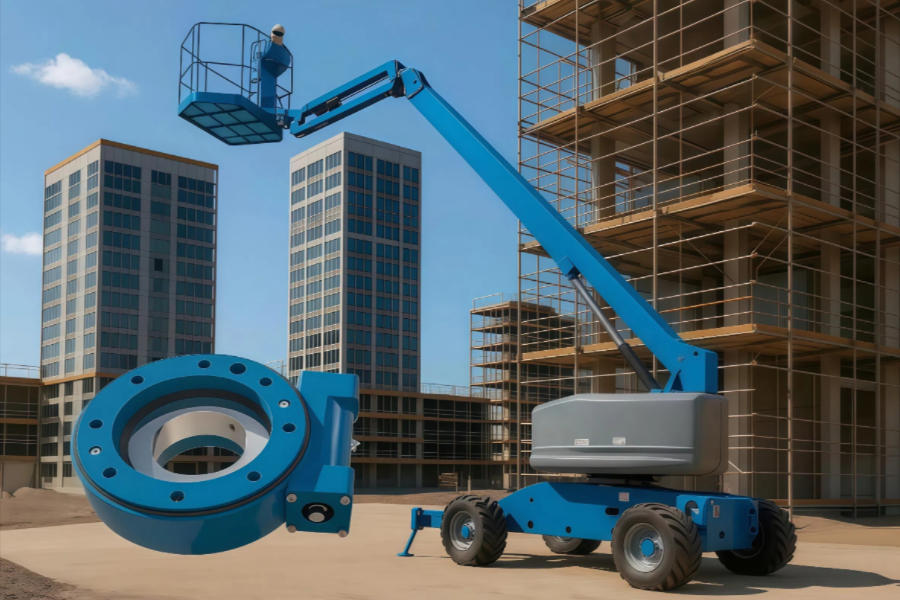- Precision-crafted slewing bearings, slew drives and gears.
- sales@lyradrive.com
A manlift, also known as a personnel lift or vertical mast lift, often incorporates a slew drive mechanism to enable rotation of the work platform. This feature is critical for providing flexibility and access in various industrial, construction, and maintenance environments, where space constraints and precise positioning are key factors.
What is a Slew Drive in the Context of Manlifts?
In manlifts, a slew drive serves as a pivotal component that allows the platform to rotate around a vertical axis. This rotation capability is essential for operators to reach different work areas without the need to reposition the entire machine. Slew drives in manlifts are similar to those used in other types of aerial work platforms, consisting of a slewing bearing, a drive gear (typically a worm gear), and a motor, all housed within a compact and robust enclosure.
Design Features of Manlift Slew Drives
Compact and Efficient: Manlifts are often used in tight spaces, making the compact nature of slew drives ideal for these applications. They do not require additional space for external gearing and motors.
High Torque and Low Speed: The worm gear configuration provides high torque at low speeds, which is crucial for the controlled and precise positioning of the work platform.
Self-locking Capability: The natural self-locking mechanism of the worm gear ensures that the platform remains in position even if power is lost, enhancing operator safety.
Integrated Motor: Slew drives typically come with an integrated electric or hydraulic motor, tailored to the power setup of the manlift.
Advantages of Using Slew Drives in Manlifts
Safety: The self-locking feature prevents unintended movement, making the platform safer for operators working at heights.
Precision: Allows for fine adjustments in the platform's positioning, which is particularly useful in complex environments where precise movements are necessary.
Space Efficiency: The all-in-one design minimizes the space needed for mechanical components, which is advantageous in the compact designs of manlifts.
Ease of Installation and Maintenance: As a self-contained unit, the slew drive is easier to install and maintain compared to separate components.
Durability: Designed to withstand the rigors of frequent use in various environments, ensuring long service life and reliability.
Common Applications in Manlifts
Platform Rotation: The primary use of slew drives in manlifts is for the rotation of the operator's platform. This feature significantly enhances the versatility and effectiveness of the manlift by providing better access to work areas.
Fine Positioning: In addition to broad movements, slew drives enable fine adjustments, which are crucial when operators must navigate complex spaces or perform delicate tasks.
Selection Considerations
Load Capacity: It’s important to choose a slew drive that can handle the load of the platform plus the maximum intended load (operators and tools).
Environmental Factors: Considerations for environmental resistance (e.g., dust, water, extreme temperatures) should inform the choice of materials and seals in the slew drive.
Power Compatibility: The selection between electric and hydraulic motors will depend on the existing power systems of the manlift and operational preferences.
Regulatory Compliance: Ensuring that the slew drive meets industry safety standards and regulations is critical, especially given the potential risk associated with working at heights.